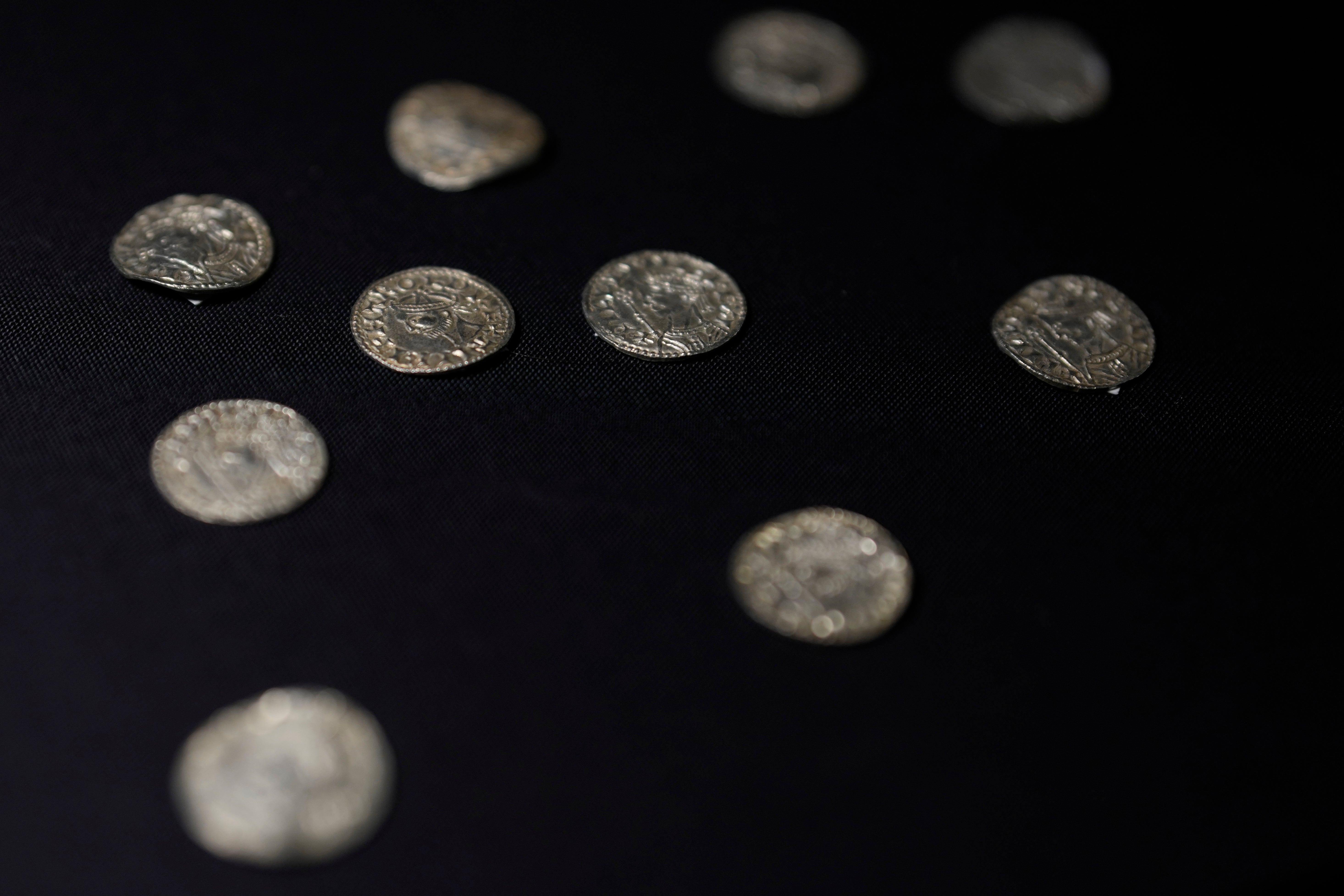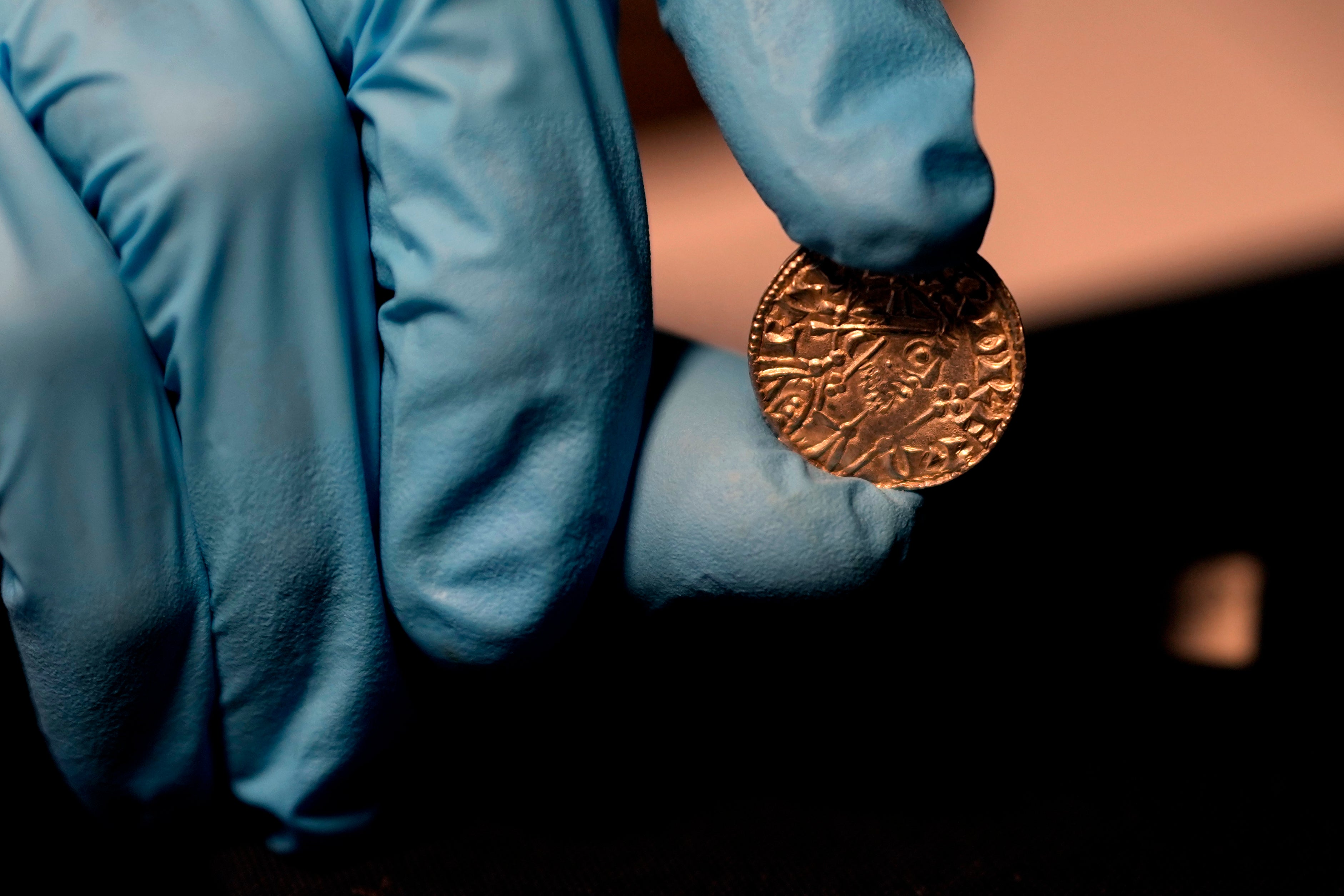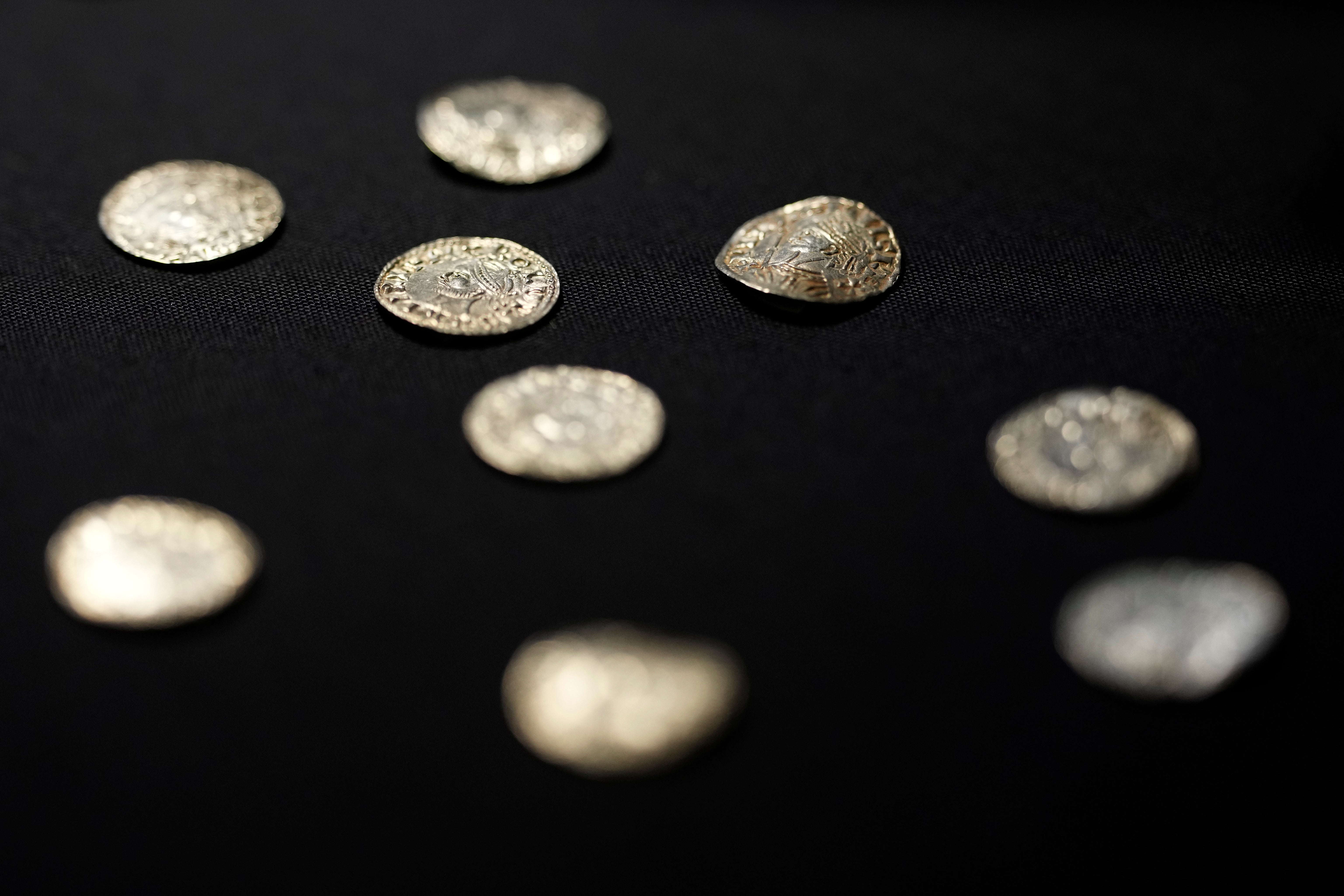Detectorist’s hoard of 1,000-year-old coins that could rewrite English history sells for millions
The Chew Valley Hoard has been bought for the nation with money from the charitable arm of Britain’s national lottery

Your support helps us to tell the story
From reproductive rights to climate change to Big Tech, The Independent is on the ground when the story is developing. Whether it's investigating the financials of Elon Musk's pro-Trump PAC or producing our latest documentary, 'The A Word', which shines a light on the American women fighting for reproductive rights, we know how important it is to parse out the facts from the messaging.
At such a critical moment in US history, we need reporters on the ground. Your donation allows us to keep sending journalists to speak to both sides of the story.
The Independent is trusted by Americans across the entire political spectrum. And unlike many other quality news outlets, we choose not to lock Americans out of our reporting and analysis with paywalls. We believe quality journalism should be available to everyone, paid for by those who can afford it.
Your support makes all the difference.Amateur detectorist Adam Staples knew he’d found something when his metal detector let out a beep. And then another. And another.
Soon “it was just ‘beep beep, beep beep, beep beep,’” Staples said.
In a farmer’s field in southwest England, Staples and six friends had found a hoard of more than 2,500 silver coins that had lain in the ground for almost 1,000 years. Valued at £4.3 million and now bound for a museum, they will help shed light on the turbulent aftermath of the Norman conquest of England.
“The first one was a William the Conqueror coin — 1,000 pounds, 1,500 pounds value,” Staples said Tuesday at the British Museum, where the hoard will go on display in November. “It’s a really good find. It’s a find-of-the-year sort of discovery. And then we got another one, (we thought) there might be five, there might be 10.

“And it just got bigger and bigger," he said — the biggest find in his 30 years of searching the fields and furrows of Britain as an amateur detectorist.
The hoard, discovered in 2019 and recently acquired by the South West Heritage Trust, totaled 2,584 silver pennies minted between 1066 and 1068, some showing conquering King William I and others his defeated Anglo-Saxon predecessor Harold II.
Michael Lewis, head of the Portable Antiquities Scheme — a government-funded project that records archaeological discoveries made by the public – said it is “one of the most spectacular discoveries” of recent years, especially because “its story is yet to be fully unraveled.”
Lewis said the coin hoard will help deepen understanding of the most famous date in English history: 1066, the year William, Duke of Normandy, defeated King Harold at the Battle of Hastings, replacing England’s Saxon monarchs with Norman French rulers.

“Most of us are taught about the Norman Conquest of England at school, probably because it was the last time that England was successfully conquered,” Lewis said. “But it a story based on certain myths,” such as the notion that the battle pitted “English versus French,” or “good” Saxons against “bad” Normans.
In fact, the warring families were interrelated, and Lewis said the hoard “helps us to tell a different story, one that is more nuanced.”
Though the invasion marked a historic schism, the coins in the hoard are remarkably similar whether they were minted before or after the conquest. One side shows a monarch’s head in profile, the other an emblem: an elaborate cross for William, the somewhat ironic word “pax” -- peace -- for Harold.
Amal Khreisheh, curator of archaeology at the South West Heritage Trust, said the coins were likely buried for safekeeping as local rebellions erupted against Norman rule.
“We know that the people of Exeter rebelled against William in 1068 and that Harold’s sons, who were in exile in Ireland, came back and started mounting attacks along the River Avon down into Somerset,” she said. “So it’s probably against that background they were hidden.”

The Chew Valley Hoard, named for the rural area where it was found, has been bought for the nation with money from the charitable arm of Britain’s national lottery. After going on display at the British Museum and other museums around the U.K., it will have a permanent home at the Museum of Somerset in Taunton, 130 miles (210 kilometers) southwest of London.
It has taken several years for the hoard to make its way through Britain’s system for handling amateur archaeological finds. The Treasure Act decrees that anyone who finds historic gold, silver or other precious items must inform the local coroner. If a coroner declares it treasure, the hoard will belong to the government, and museums can bid for funding to acquire it.
An expert committee sets a value on each find, with the money divided between the owner of the land and the finders. In this case, Staples and six fellow detectorists split half of the 4.3 million pound purse.
“It’s like winning the lottery,” said Staples, who plans to continue his treasure-hunting hobby. “I’m not going to give up now. I love it.”